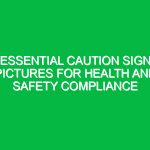Introduction
In today’s dynamic work environments, the Safety and health of workers are paramount. Personal protective equipment (PPE) plays a crucial role in safeguarding employees against potential Hazards they may encounter on the job. Defined as specialized clothing or equipment designed to protect individuals from exposure to various risks, PPE encompasses a wide array of gear, including helmets, gloves, masks, and Eye Protection. Within the Health, Safety, and Environment (HSE) domain, the effective use of Personal Protective Equipment is not just a regulatory requirement; it is a fundamental component of a proactive Safety culture.
In this article, we will delve into the essential aspects of Personal Protective Equipment use, its significance in the workplace, relevant Regulations, and practical guidance for implementation. Understanding the critical role of PPE can help organizations mitigate risks and foster a safer work environment, ultimately enhancing employee well-being and productivity.
Understanding Personal Protective Equipment Use
Personal protective equipment use is fundamentally about risk management. It involves identifying potential Hazards in the workplace and implementing appropriate measures to protect workers. Here, we will explore various Types of PPE, their applications, and the importance of proper usage.
Types of Personal Protective Equipment
The spectrum of personal protective equipment is vast, and its selection should be tailored to the specific needs of each workplace. Below are the primary categories of PPE:
- Head Protection: Hard hats and helmets are designed to shield the head from falling objects and Electrical Hazards.
- Eye and Face Protection: Safety glasses, goggles, and face shields protect against chemical splashes, flying debris, and harmful radiation.
- Hearing Protection: Earplugs and earmuffs are essential in environments with excessive noise levels to prevent hearing loss.
- Respiratory Protection: Masks and respirators safeguard against inhaling harmful substances, including dust, fumes, and vapors.
- Hand Protection: Gloves made from various materials provide protection against cuts, burns, chemicals, and electrical hazards.
- Foot Protection: Safety boots with steel toes protect against heavy falling objects and punctures.
- Body Protection: Coveralls, vests, and aprons shield against chemicals, heat, and other workplace hazards.
The Importance of Proper Use
Effective personal protective equipment use can significantly reduce the risk of workplace injuries and illnesses. For instance, in industries such as construction, where heavy machinery and hazardous materials are prevalent, the correct use of PPE can be the difference between a safe workday and a catastrophic incident. However, merely providing PPE is not enough; proper Training and enforcement of safety protocols are essential to ensure that employees utilize the equipment correctly.
Best Practices for Personal Protective Equipment Use
To maximize the effectiveness of personal protective equipment use, organizations should adopt Best Practices tailored to their specific environments. Here are several key strategies:
Conduct a Thorough Hazard Assessment
Before selecting PPE, conduct a comprehensive assessment of workplace hazards. This involves identifying potential risks associated with specific tasks and understanding the nature of those risks. For example, in a chemical manufacturing plant, the assessment should focus on exposure to toxic substances, requiring appropriate respiratory and skin protection.
Provide Adequate Training
Training employees on the proper use and Maintenance of PPE is crucial. Workers should be educated on how to wear, adjust, and care for their protective gear. For instance, a construction worker trained in correctly wearing a hard hat is less likely to sustain a head injury than one who is not.
Regularly Inspect and Maintain Equipment
PPE should be subject to regular inspections to ensure it remains in good condition. Damaged or worn-out equipment can compromise safety. Organizations should establish a maintenance schedule and replace any defective PPE promptly. A real-life example of this can be seen in a manufacturing plant where regular checks revealed that many workers were using frayed gloves, increasing the risk of cuts and exposure to chemicals.
Encourage a Safety-First Culture
Fostering a culture of safety encourages employees to prioritize their well-being. This can be achieved through regular safety meetings, rewards for safe behavior, and open communication about safety concerns. Employees who feel supported in their safety practices are more likely to adhere to PPE guidelines.
Identifying Potential Hazards and Risks
Understanding the specific hazards present in the workplace is critical for choosing the appropriate PPE. Common hazards include:
- Chemical Exposure: Workers in laboratories or industrial settings may face risks from harmful substances, necessitating the use of gloves, goggles, and respirators.
- Physical Hazards: Construction sites often involve falling objects or sharp tools, highlighting the need for hard hats and cut-resistant gloves.
- Biological Hazards: Healthcare workers may encounter pathogens, making masks and gowns essential PPE.
- Ergonomic Hazards: Repetitive motion injuries can be mitigated with proper ergonomic practices, but specific PPE, such as back supports, can also be beneficial.
Regulations and Standards Governing Personal Protective Equipment Use
The use of personal protective equipment is governed by various regulations and standards designed to ensure worker safety. In the United States, the Occupational Safety and Health Administration (OSHA) sets forth specific guidelines regarding PPE in the workplace. Key regulations include:
- osha Standard 1910.132: This regulation mandates that employers assess hazards and provide appropriate PPE to employees.
- OSHA Standard 1910.133: This standard specifically addresses eye and face protection requirements.
- OSHA Standard 1910.134: This regulation outlines the requirements for respiratory protection.
Compliance with these standards not only protects employees but also minimizes the liability risks for employers. Failure to adhere to these regulations can result in severe penalties and increased insurance costs.
Conclusion
In conclusion, personal protective equipment use is a vital aspect of Workplace Safety and health. By understanding the types of PPE available, recognizing potential hazards, and implementing Best Practices, organizations can create a safer environment for their workforce. Furthermore, adherence to regulations and standards ensures not only compliance but also a culture of safety that Benefits everyone involved.
As we continue to navigate evolving workplace challenges, prioritizing personal protective equipment use remains essential. It is not just about compliance; it is about protecting lives and fostering a sustainable work environment. Let us all commit to safeguarding our workforce today and into the future.


